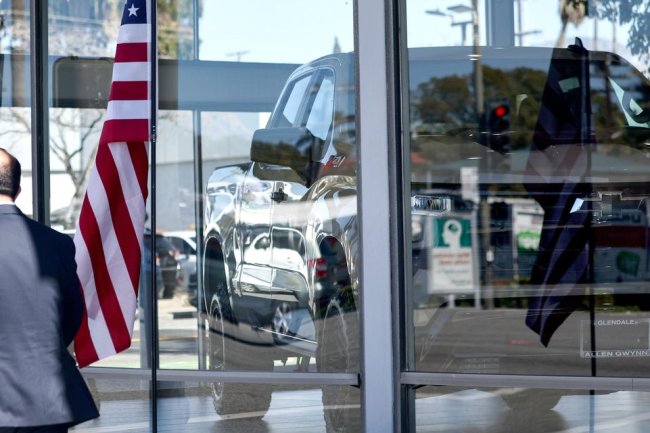Scientists Question Superconductivity Claim From Physicist Accused of Plagiarism
Multiple scientists and labs have raised doubts about Ranga Dias’s room-temperature superconductor Ranga Dias, a physicist at the University of Rochester, inside one of his laboratories on the university’s campus in Rochester, N.Y. Photo: Lauren Petracca for The Wall Street Journal By Nidhi Subbaraman Updated Aug. 1, 2023 11:35 am ET A physicist accused of fabricating data and plagiarizing portions of his Ph.D. thesis is facing doubts from his peers about his boldest claim: the discovery of a room-temperature superconductor. Ranga Dias, a physicist at the University of Rochester, stunned colleagues and made headlines in March with news published in the prestigious journal Nature that the rare-earth metal lutetium combined with nitrogen and hydrogen was a supercond


Ranga Dias, a physicist at the University of Rochester, inside one of his laboratories on the university’s campus in Rochester, N.Y.
Photo: Lauren Petracca for The Wall Street Journal
A physicist accused of fabricating data and plagiarizing portions of his Ph.D. thesis is facing doubts from his peers about his boldest claim: the discovery of a room-temperature superconductor.
Ranga Dias, a physicist at the University of Rochester, stunned colleagues and made headlines in March with news published in the prestigious journal Nature that the rare-earth metal lutetium combined with nitrogen and hydrogen was a superconductor at a comfortable 70 degrees Fahrenheit.
The team dubbed the material “reddmatter”—a reference to a fictitious cosmic substance in the 2009 movie “Star Trek” that formed black holes—because, they said, the material transformed from bright blue to a vibrant red as it got compressed.
Long sought-after by engineers and physicists, superconductivity at room temperature and regular pressure could transform electronics and engineering. Some known materials allow current to pass with zero resistance and no loss of energy, but the ultralow temperatures or crushing pressures at which they exhibit such “superconducting” behavior makes them expensive and impractical for widespread use.
Now multiple physicists and labs, after scrutinizing data published in Dias’s March study and experimentally repeating the team’s methods, aren’t convinced that the group found the Holy Grail chased by condensed-matter physicists. Amid the criticism, one team reported superconductivity in one of two samples supplied by Dias’s lab—but other physicists believe their measurements could be the result of a loose electrical connection. A spokesperson for Nature said that the journal is assessing concerns that have been raised.
“We’re absolutely still waiting for confirmation that superconductivity at room temperature exists,” Douglas Natelson, a condensed-matter physicist at Rice University in Houston, said of the claims.

An experimental setup inside one of Ranga Dias’s laboratories at the University of Rochester.
Photo: Lauren Petracca for The Wall Street Journal
It is the latest cloud in a storm brewing over Dias and his work. Nature last year retracted a 2020 paper claiming superconductivity in another material after some physicists pointed to peculiarities in key data. A pair of physicists assembled evidence that suggested about a fifth of Dias’s Ph.D. thesis at Washington State University matched text in other publications. And in July, the journal Physical Review Letters told Dias and his co-authors that a retraction of a 2021 study was necessary after an internal review confirmed data fabrication.
“One cannot trust anything he writes or says or publishes,” said Dirk van der Marel, a physicist and professeur honoraire (emeritus professor) at the University of Geneva in Switzerland who analyzed past work by Dias and flagged inconsistencies.
Dias didn’t respond to a request for comment.
The University of Rochester made two inquiries over the 2020 retracted Nature study, but found “no evidence that supported the concerns,” a spokesperson said, adding that university leaders are aware of the possible retraction.
Washington State University administrators know about allegations around Dias’s Ph.D. thesis, a spokesperson said. The university treats misconduct cases as confidential and didn’t confirm if one had been opened.
The March study was the second big superconductivity finding for Dias and collaborator Ashkan Salamat, a physicist at the University of Nevada, Las Vegas.
In 2020, they led a team that described superconductivity at room temperature in another material—a combination of carbon, sulfur and hydrogen—that was hit with a laser and crushed between diamonds to an extreme pressure similar to that within the Earth’s core.
The results were lauded as breakthroughs. But the paper was retracted by publisher Nature in September 2022, after other physicists, including van der Marel, pointed to data that they said didn’t add up. Salamat didn’t respond to a request for comment.
Write to Nidhi Subbaraman at [email protected]
What's Your Reaction?






















